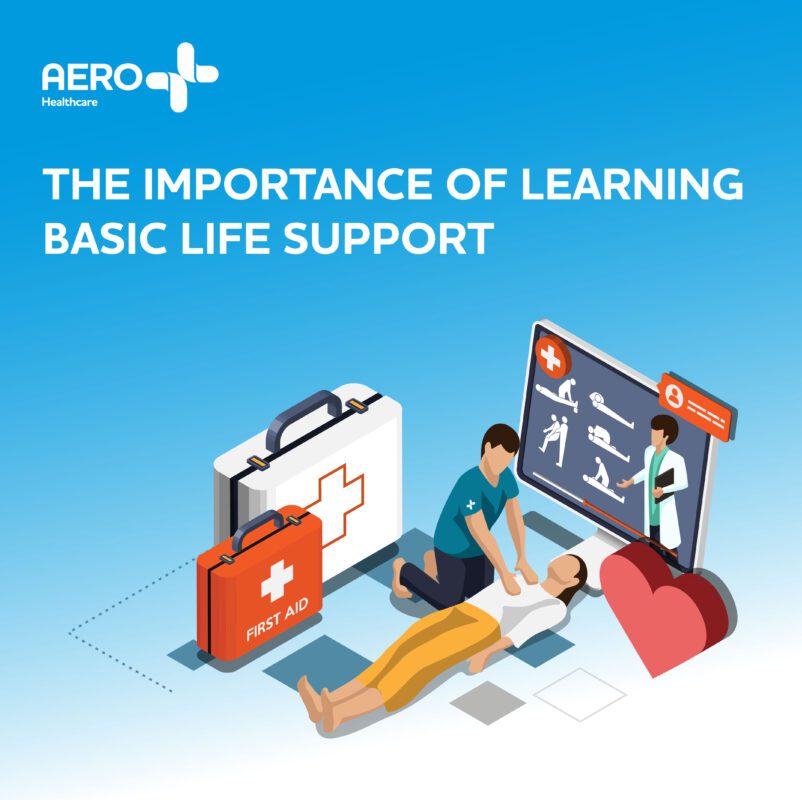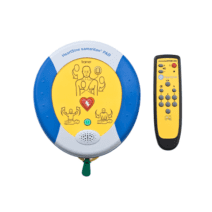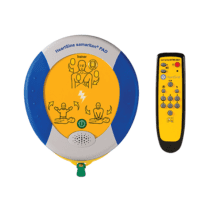Blog
The Importance of Learning Basic Life Support
Published 02/10/2023

Approximately 85% of adults lack the confidence, knowledge and training to assist an unresponsive person. It’s worth considering, do you and the people in your workplace fit into the 15% that feel they can act? Whilst most workplaces have at least one dedicated first aider to every 50 employees, there’s no rule for how many your workplace should have. But that doesn’t mean workplaces should just do the minimum to get by.
Basic life-saving skills are more important than ever before. For every minute that passes without treatment, your chance of survival reduces by up to 10%, so there’s no luxury in waiting for an ambulance to arrive. You need to act straight away. Even introducing first aid training in your place of work could make all the difference between surviving or not. After all, it’s no secret that those suffering from life-threatening conditions, such as sudden cardiac arrest, have a greater chance of survival (up to 75%) with life-saving treatment.
What is basic life support training?
From CPR to the recovery position, basic life support (BLS) training teaches you how to keep someone alive and safe before medical care arrives on the scene. For example, BLS can show you how to put someone in the recovery position safely, whilst monitoring any obvious dangers that could harm you or your casualty. It can also teach you how to administer abdominal thrusts, also known as the Heimlich manoeuvre, and the exact actions you need to take when someone is choking.
Learning basic life-saving training can empower you to act in an emergency, enabling you to take control as you wait for expert medical care. Unfortunately, around 70% of people fear that poor judgement or lack of confidence could make a scenario worse. That’s where BLS comes in; it doesn’t just cover first-aid treatment. It’s also designed to walk you through the assessing an incident, contacting 999 and other ways to keep your casualty and any bystanders safe.
What first aid training is needed in the workplace?
Each industry is different and has its own diverse set of risks. Training is often tailored to meet each industry’s needs and legal requirements. For low-risk workplaces, like an office environment, you might find that the commonly recorded incidents result from slips, trips or falls. Whereas, high-risk industries, such as construction, are likely to experience more serious injuries caused through crushes or falls.
Normally, your workplace first aid kit will reflect these risks, as will any training. However, it’s never a bad thing to have as many people trained in first aid as possible, even if your industry is considered low risk.
Whilst some workplaces naturally have higher risks, life-threatening conditions and illnesses can appear at any time and to anyone. Even in an office setting, choking is still a possibility and people can severely injure themselves through falls or slips. Likewise, sudden cardiac arrest can happen to anyone and at any age. It’s because of these unpredictable events that some employers now offer a duty of care that goes above and beyond legislation.
You might find more construction workers or arborists hold a First Response Emergency Care Level 3 (FREC 3) qualification for first aid. FREC 3 is a more advanced form of first aid training designed for those in high-risk workplaces. The qualification covers topics such as severe bleeds and how to use a tourniquet.
Why is first aid training important for workplaces?
Employers have a duty of care to their workforce and staff, which is covered by health and safety guidelines. It is also an employer’s responsibility to ensure their employees get “immediate help if [they’re] taken ill or injured at work.”
It could be argued that a lack of basic first aid or life support training hinders an employee’s ability to get the help they need immediately.
What are the benefits of learning basic life support at work?
Any first aid training will come in handy, whether it’s to treat a graze or to understand how to do CPR. Truthfully, it could save someone’s life.
Compliance
According to HSE legislation, every workplace must have these three items in place:
- A first aid kit that is appropriately stocked
- Appointed person(s) to take responsibility for workplace first aid
- Information must be displayed that informs employees about first aid arrangements
Without these three items in place, employers could be breaking the law. However, that’s where first aid training and BLS can support you. As around 83% of workers can’t locate a first aid kit, sending some, if not all, of your employees on a training course will significantly decrease this figure. Part of BLS training allows you to explore what a first aid kit looks like, how to locate one using signage and what its contents should be.
Save lives
With only 15% of adults confident enough to administer first aid in the UK, there’s a huge room for improvement. Of this figure, it appears that only 1% of workers have attended a first aid course too, meaning a shockingly low number of individuals could provide immediate first aid. One study conducted by the British Red Cross recorded that around 59% of deaths caused by an injury could have been prevented if first aid had been administered before the emergency services arrived.
Reduce incidents
Providing first aid training for your staff could make them more aware of the potential risks they face in the workplace. It might sound obvious, but incidents often occur because of a lack of awareness by others. Doing so might also support your workplace health and safety committee and improve your organisation’s overall response to health and safety.
Increase employee morale
Giving your workforce the tools to act in an emergency is likely to increase their morale as well as empower them to act. As humans, we thrive off responsibility and being able to make decisions in the heat of the moment. By equipping your workforce with basic first aid skills, your employees are more likely to feel safe at work whilst also knowing how to act when an incident occurs.
Improve company image
Businesses that allow their response to health and safety to fall by the wayside are bound to see more incidents occur in their place of work. Not only does this affect the morale of staff as they don’t feel safe, but it also enables the general public to adopt a negative impression of your company. Forward-thinking businesses offer first aid courses relevant to their place of work as a way to always ensure safety for their workforce.
Raise awareness of first aid at work
According to one study, around 83% of British workers don’t know where their workplace first aid kit is or where to look for it. If an incident were to occur, only a handful of employees would be able to retrieve vital first aid equipment. Unfortunately, this can also be seen as a blocker for employers who need to fulfil their legal obligation for first aid at work, especially as it’s a requirement for employers to display information about first aid arrangements. Fortunately, this is something heavily covered in BLS training, alongside what the contents of a first aid kit include and how to use it.
What basic life support training can you get?
There are training options to suit a range of industries and their requirements. Here are some examples of what your workplace could do, but it’s worth noting that the contents will depend on the training provider:
First aid at work
First aid at work courses cover the basics, such as calling for help, the primary survey and basic first aid. You’ll find this course reviews workplace health and safety requirements. It enables individuals to approach someone in need, make the right judgement calls about the level of support they require and ensure their safety until expert medical care arrives.
Emergency first aid at work
As well as covering the basics of first aid, emergency first aid at work also looks at treating burns and conducting CPR with resuscitation on adults. Individuals on the course may also get a deeper understanding of how to treat a choking adult, how to respond to seizures, how to use a defibrillator and much more.
Paediatric first aid
Paediatric first aid is a great course for parents but might only be relevant to those working with children and early years. This course meets Ofsted Early Years and Childcare Register requirements, enabling adults to keep children in their care safe.
First aid for anaphylaxis
It’s estimated that up to 0.95% of the UK’s population are severely allergic to either peanuts or tree nuts, causing them to enter a state of anaphylaxis if they encounter them. People with known severe allergies may carry an Epi-pen. This first aid course teaches individuals how to respond to anaphylaxis. Having this basic knowledge could save a colleague’s life if they encounter an allergen at work.
Resuscitation training courses
Whilst resuscitation is taught in emergency first aid at work courses, it never hurts to do a refresher on it. Knowing how to perform chest compressions and rescue breaths confidently is an added benefit when dealing with someone who is unresponsive and not breathing. This course may also run through how to use a defibrillator.
Need training supplies for basic life support?
At Aero Healthcare, we supply a range of products that assist with basic life support training. From training defibrillators to CPR face shields, our tools help simulate lifelike emergencies that prepare first aiders for real-life scenarios. Contact us today to find out more.
Get in Touch!Share this article




